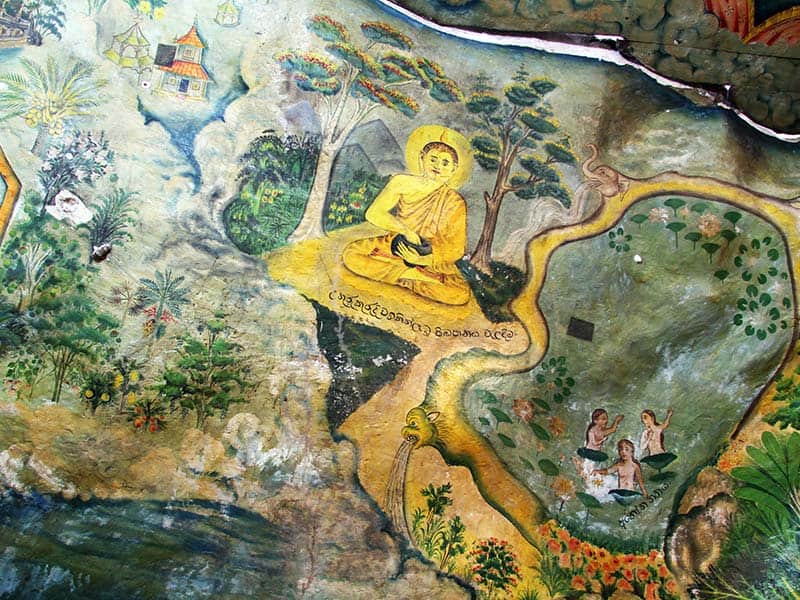The Rock Temple of Mulkirigala, situated on an isolated rock in Giruwa Pattu in the Hambantota district, over six hundred feet high, is the most famous of its kind in southern Sri Lanka, dating back to the 2nd Century BC, and then being added to by various succeeding monarchs who traveled south into what was then known as Rohana.
It was also known as Mulkirigala or Muhundugiri and to the Dutch invaders, as Adam’s Berg, probably a form of confusion with the actual Adam’s Peak. One of the Dutch writers later took the blame for the mistake. However, even at first, it fooled nobody and the original name of the mountain still remains to this day in one form or another. Its name originates from the legend of Saddhatissa, King of Anuradhapura, hunting in the region when a hunter told him that this was a good place to construct a temple. The king took the man’s word and then came the temple that we see today or at least its lower terraces.
King Saddhatissa is the one credited with much of the initial work done on this temple, being one of a massive number of religious places he constructed during his rule of alarmingly high religious zeal.
However, the history of Mulkirigala dates back to before the temple complex was constructed, to the very beginning of the Buddhist era, when the nun Sanghamitta disembarked with the Bo sapling that she brought from North India. Also, much before that it is said that one of the Aryan migrant groups under Princess Badda Kacchana made their home here.
The temple has five terraced regions, or “Maluwa” in the local tongue and these can be accessed via the granite staircase that leads up from, and through the Chetiya Maluwa, the terrace containing the stupa. The lowermost terrace is one of the oldest, dating right back to the early Anuradhapura era when Saddhatissa was ruling a newly unified Sri Lanka. One can see rather well-preserved remains a priestly dwelling as well as a rest house for pilgrims. When one walks off to Part of the significance of this place is due to the bodhi tree at the Upper Bo Terrace, it is said to be one of thirty-two saplings descended from the primary sapling brought down in the early Anuradhapura period to Sri Lanka. It is thus a close cousin of the famous Jaya Sri Maha Bodhi Tree. Also, in yet another twist we have seven stupas at Mulkirigala and a variety of beautiful artworks. Some of the kings credited with the work here include Kavantissa, father of Saddhatissa, and in the 4th Century AD during the heyday of Anuradhapura, King Dhatusena constructed the Dhakkinagiri Vihara. The other great facets of this temple complex include some fifteen-meter reclining Buddha images.
As in other cave temples such as Dambulla, there are painted caves in bright shades of vermillion, gold, white, and other warm, flaming shades. In particular, there are images from the old Jataka stories, including the famous Vessantara Jataka, the story of a king who gave up everything, including his wife and children for a chance of enlightenment and salvation from sorrow.
Written by Vasika Udurawane for Travel Lanka Compass



0 Comment